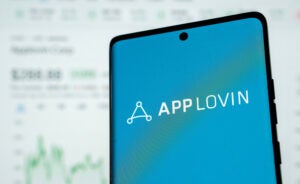 “Data-Driven Thinking” is written by members of the media community and contains fresh ideas on the digital revolution in media.
“Data-Driven Thinking” is written by members of the media community and contains fresh ideas on the digital revolution in media.
Today’s column is written by Janis Zech, co-founder and chief operating officer at Fyber.
The growth in mobile programmatic is well documented, with global spending forecasts on the rise, especially in video.
These billion-dollar budgets represent a lucrative opportunity for app developers and publishers, but there’s a major hurdle to clear first: enabling advertisers to buy in-app inventory with the same level of confidence they have with the mobile and desktop web. Right now, the data isn’t there yet to support that.
Mobile web and desktop-based programmatic buys rely on cookies to give advertisers a holistic view of who they’re targeting. But the reliance on cookies doesn’t apply in the app economy, which has created a mismatch between the amount of revenue publishers and developers earn for their apps and the sizable, highly engaged audiences those apps attract.
In 2015, for example, nearly half of leading publishers’ revenues came from their mobile web properties versus just 18% from their apps. Since people spend more time in apps than browsing the Internet or watching TV, the disparity hurts both publishers and advertisers in search of engagement.
Programmatic buying is data-driven buying, and with in-app the industry is still figuring out how to get data from Apple IDFA and Google Ad IDs into programmatic platforms in a scalable and applicable way. Closing this gap for advertisers will lead to a major windfall for mobile developers and publishers, and there are two specific technological developments on the horizon that will make this possible.
Bridge Technologies That Match Device IDs And Cookies
Most cross-channel demand-side platforms (DSPs) and connected data management platforms (DMPs) have realized the importance of in-app inventory and have started working with bridging technologies, either in-house or through third-party services, to extend cookie-based audience data pools to Apple IDFA and Google Ad IDs.
In addition, there has been increased VC investment in startups that focus on cross-device bridging technology. The challenge these companies must solve is a dynamic one, as people activate and use different devices all the time, and it’s crucial to collect this data in an ongoing fashion.
The ability to profile users constantly and systematically is key for these bridging technologies to deliver real value. We can expect to see them thrive in the next few years as the science of cross-device data collection and analysis becomes more accurate by pulling in the data from billions of programmatic transactions.
Hybrid DMPs And Attribution Platforms
Advertisers that want to target mobile app users typically do so by using CRM data and working with mobile-centric DMPs. But these mobile DMPs aren’t creating inventory pools that most DSPs can read, leading to a lack of scale. And despite advancements in probabilistic matching, there are still huge data pools within desktop DMPs that can’t really be used for in-app advertising.
To deliver real results for advertisers and revenue for mobile developers and publishers, look for the emergence of truly device-agnostic or cross-platform DMPs in the next 12 to 24 months. We may actually see even more innovative multichannel attribution companies merging with or becoming DMPs themselves because of their proficiency in working with data.
Tackling the challenge of in-app user attribution, targeting and programmatic trading is the next frontier in mobile ad tech. What’s most exciting about it is that the solutions will benefit every player in the ecosystem, including technology providers, advertisers, mobile app developers and publishers.
Follow Janis Zech (@janiszech), Fyber (@Fyber) and AdExchanger (@adexchanger) on Twitter.













